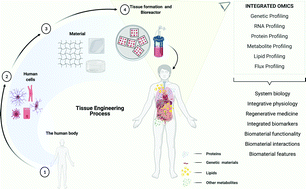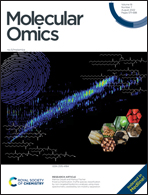Omics technologies for high-throughput-screening of cell–biomaterial interactions
Abstract
Recent research effort in biomaterial development has largely focused on engineering bio-instructive materials to stimulate specific cell signaling. Assessing the biological performance of these materials using time-consuming and trial-and-error traditional low-throughput screening techniques remains a critical challenge in the field. In contrast, the use of increasingly sophisticated omics technologies to facilitate high-throughput screening of unbiased global understanding of cell–biomaterial interactions at gene, epigenetic, mRNA, protein, metabolite, and lipid levels holds great potential to predict the therapeutic outcome of biomaterials with specific properties. In this review, we highlight the potential use of omics technologies – namely transcriptomics, proteomics, metabolomics and lipidomics – in biomaterial design and deciphering of the fundamental cell behaviors (e.g., adhesion, migration, differentiation) in response to cell–biomaterial interactions. Moreover, the potential challenges and prospects of high-throughput analysis platforms are discussed rationally, providing an insight into the developing field and its use in biomaterials science.



 Please wait while we load your content...
Please wait while we load your content...